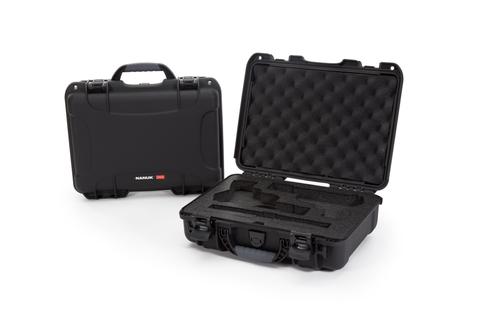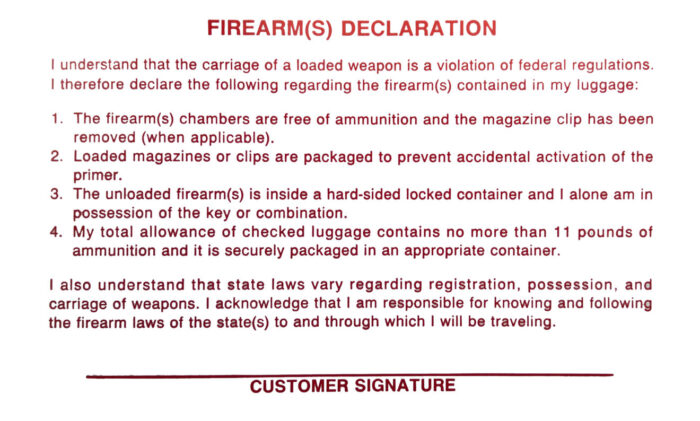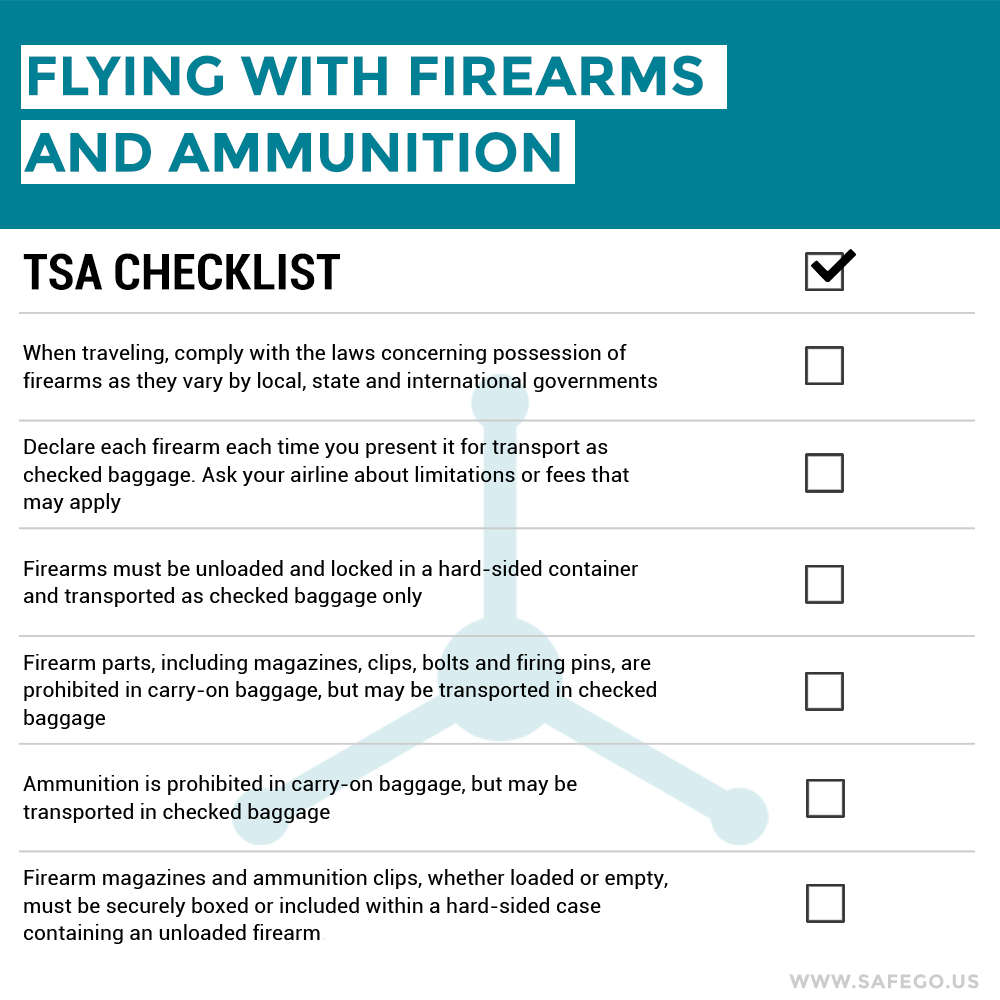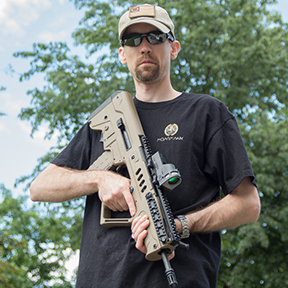How to Fly with a Firearm – Step By Step
Flying with a firearm is relatively easy, but you need to know the rules to save yourself time and heartache. The TSA rules can change, so be sure and consult the TSA website before travel.
Before Leaving Home
The first thing to know is that your firearm must be unloaded before being packed. This means that the firearm itself can’t have a round in the chamber. Your magazines do not have to be empty of ammunition, but the loaded magazine cannot be in your firearm. You may transport unloaded firearms in a locked hard-sided container as checked baggage only.
For the case, there are several options on the market, including but not limited to Pelican, Plano, SKB, Negrini, and Nanuk. When selecting a case, think about how strong the case is, not just on the sides but the lock area as well. You want to look for cases that have reinforcement in the area that the padlocks go through. For the locks themselves, make sure that you use non-TSA locks.
If you use a smaller case for carrying a handgun, you can put that case into your other checked luggage. The same rules apply to the handgun case; it must be a hard case and locked with a non-TSA lock. For the larger luggage, it must be secured with a TSA lock if you are going to lock it.
Knives and other objects can be placed in the same case as your firearm. Additionally, you can typically have more than one firearm in the same case. Check your airline below because some airlines limit the number of firearms per case. Silencers and lower receivers are considered firearms and are subject to the same rules as any other firearm when flying. Firearm parts, including magazines, bolts, and firing pins, are prohibited in carry-on baggage but may be transported in checked baggage. If you are in doubt, then put it in your checked baggage. One exception to this are rifle scopes which are permitted in carry-on luggage.
Lastly, you are subject to the same weight restrictions as everyone else when flying. These hard cases can be heavy on their own, so keep that in mind, so you don’t have any surprises at the ticket counter. Additionally, you are only allowed to carry a certain amount of ammunition by weight. The amount varies by airline, so know the restrictions before you pack.
At the Airport
When you arrive at the airport, make sure that your firearm transport case is locked. At the ticket counter, let the agent know that you need to “Declare a firearm.” The agent will ask which case the firearm is in and hand you a Firearms Declaration Card. This card varies from airline to airline, but the premise is the same.
The cards read differently but state roughly the same thing:
- I am completing on declaration tag for each container holding a firearm
- All firearms in the container are unloaded
- All ammunition is packed securely
- Firearms are contained in my luggage are in a hard-sided locked case with the only key or combination in my possession
There is a line to sign and date on the card. Sometimes the airline will have a spot for your address or other information but not always. Note: on occasion, the clerk at the counter might ask you to verify that the gun is unloaded and open your case. I suggest that you keep the firearm in the case and show clear without making a scene. Remember the clerk probably has no idea what they are looking at; they are just doing their job.
After you have checked with the ticket counter, you will proceed to the TSA counter to check in your firearm case. This location varies by airport. At the TSA counter, the TSA will ask you to open the case and swab the inside of your firearm case, they aren’t looking for gun power but explosives. You will then place the Firearm Declaration Card into the case and lock it once the TSA is finished. The TSA will run it through an x-ray machine, and you can continue to your flight. If there are any issues, they will call you back to the TSA counter.
Final Destination
When you arrive at your destination, your firearm case will come down the belt with the rest of the luggage. Depending on the airline, very large cases might be moved to a separate area for oversized baggage. Check to make sure that the case was not tampered with but do not open the case in the airport baggage claim. If you suspect the case has been tampered with, then alert security and they will typically take you to a room for you to examine your case.
Below are links to information for specific airlines firearm regulations:
Checklist
Flying with a firearm is easy and straight forward when you know what to expect. Below is a checklist to help you on your next flight.
Joe is a lifelong firearms enthusiast and liberty activist, he is also the founder of 13C Gun Reviews and 13C Media. His work in the Second Amendment community and fight for Liberty spans nearly 20 years working both in front of and behind the scenes in positions such as the Board of Directors for the RLC IN and speaking at numerous rallies across the country at the local, state and federal levels. His work with 13C focuses on providing education and information about firearms, accessories and current events.






